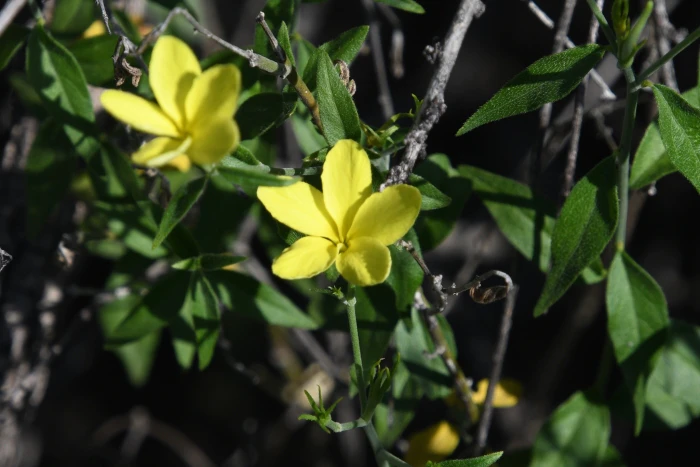Cockroach Plant
(Haplophyton crooksii)
Cockroach Plant (Haplophyton crooksii)
/
/

Mike Ostrowski
CC BY-SA 4.0
Image By:
Mike Ostrowski
Recorded By:
Copyright:
CC BY-SA 4.0
Copyright Notice:
Photo by: Mike Ostrowski | License Type: CC BY-SA 4.0 | License URL: http://creativecommons.org/licenses/by-sa/4.0/ | Rights Holder: Mike Ostrowski | Publisher: iNaturalist | Date Created: 2021-08-08T08:37:04-07:00 |

























Estimated Native Range
Climate Requirements
| • Precipitation | 6" - 35" |
| • High Temp. | 85°F - 105°F |
| • Low Temp. | 16°F - 54°F |
Summary
Haplophyton crooksii, commonly known as the cockroach plant or hierba de la cucaracha, is a perennial herb native to the Chihuahuan Desert region, including Arizona, New Mexico, Texas, and northern Mexico. It typically grows up to 24 inches tall and is found on rocky slopes and limestone outcrops within desert scrub and desert grasslands. This plant is characterized by its narrow, linear leaves and clusters of showy yellow flowers that bloom from late spring to early summer, attracting pollinators such as bees and butterflies.
The cockroach plant is valued for its insecticidal properties, derived from alkaloids present in its tissues, which have been traditionally used to repel or kill insects. In cultivation, it is appreciated for its drought tolerance and unique appearance, making it a suitable choice for xeriscaping and rock gardens. It requires minimal water once established, thrives in well-drained soils, and prefers full sun exposure. While not commonly found in nurseries, it can be propagated from seed or cuttings. Gardeners should be aware that all parts of the plant are toxic if ingested, and it should be handled with care due to its insecticidal compounds.CC BY-SA 4.0
The cockroach plant is valued for its insecticidal properties, derived from alkaloids present in its tissues, which have been traditionally used to repel or kill insects. In cultivation, it is appreciated for its drought tolerance and unique appearance, making it a suitable choice for xeriscaping and rock gardens. It requires minimal water once established, thrives in well-drained soils, and prefers full sun exposure. While not commonly found in nurseries, it can be propagated from seed or cuttings. Gardeners should be aware that all parts of the plant are toxic if ingested, and it should be handled with care due to its insecticidal compounds.CC BY-SA 4.0
Plant Description
- Plant Type: Shrub
- Height: 3-5 feet
- Width: 2-4 feet
- Growth Rate: Moderate
- Flower Color: Yellow
- Flowering Season: Spring, Summer, Fall
- Leaf Retention: Deciduous
Growth Requirements
- Sun: Full Sun
- Water: Very Low
- Drainage: Fast
Common Uses
Drought Tolerant, Low Maintenance
Natural Habitat
Native to the Chihuahuan Desert region, including rocky slopes and limestone outcrops within desert scrub and desert grasslands
Other Names
Common Names:
Scientific Names: Haplophyton crooksii, Haplophyton cimicidum var. crooksii
GBIF Accepted Name: Haplophyton crooksii